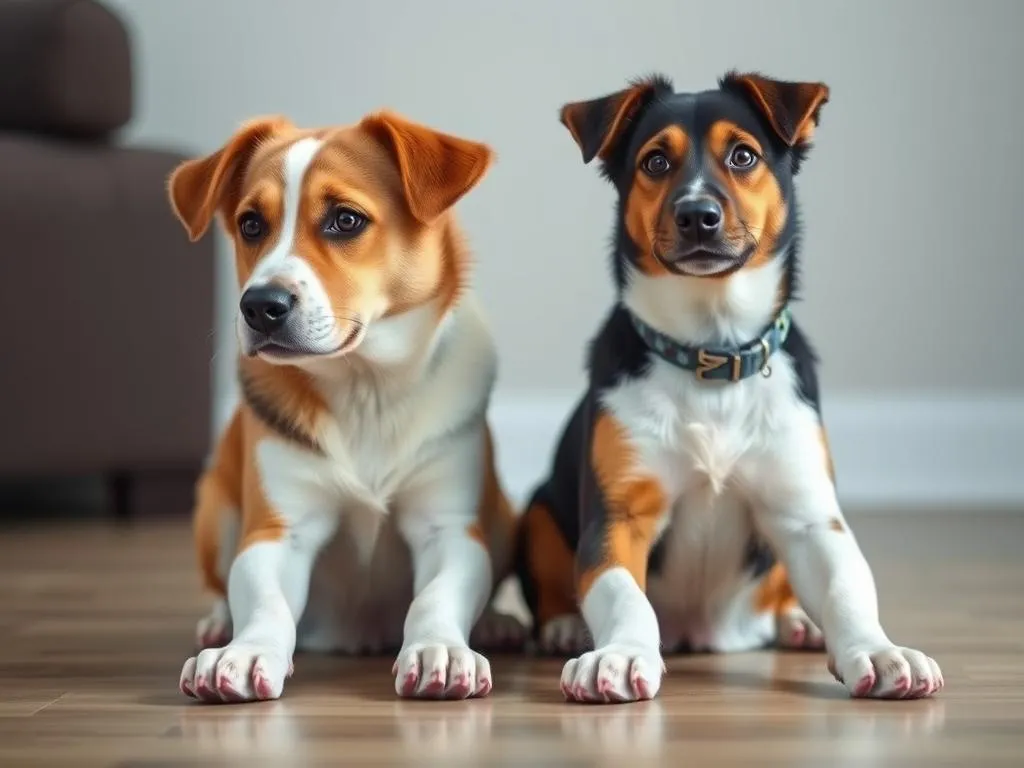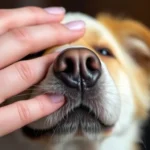
Understanding your dog’s behavior is essential not only for building a strong bond but also for ensuring their overall well-being. One intriguing behavior that many dog owners observe is the act of crossing their paws. This seemingly simple action can hold a wealth of meaning, and it’s vital to delve deeper into what it signifies about our furry companions.
Understanding Dog Behavior
Definition of Canine Behavior
Canine behavior encompasses a wide array of actions and reactions exhibited by dogs in different contexts. This behavior can be instinctual or learned, and it plays a crucial role in how dogs interact with their environment, other animals, and humans. Understanding these behaviors can significantly enhance the relationship between a dog and its owner, leading to better training, companionship, and overall happiness.
Common Dog Behaviors
Dogs communicate through various behaviors, from body language to vocalizations. Common behaviors include wagging tails, barking, and various postures. For instance, a wagging tail often indicates excitement or happiness, while barking can signal alertness or a call for attention. However, it’s important to remember that the context can dramatically alter the interpretation of these behaviors.
The Anatomy of a Dog’s Paw Position
Physical Structure of Dog Paws
The physical structure of a dog’s paws plays a significant role in their mobility and behavior. A dog’s paw consists of several parts, including the pads, nails, and digital bones. The pads provide cushioning and traction, allowing dogs to navigate various terrains. The flexibility of their paws enables them to adjust their positioning easily, which can be observed when they sit, walk, or lie down.
How Dogs Use Their Paws
Dogs use their paws for a multitude of activities—walking, running, digging, and even expressing emotions. When a dog is sitting or lying down, the position of their paws can reveal their state of mind. For instance, a dog that crosses its paws while resting might be in a relaxed state, while a dog with its paws tucked under its body may feel more vulnerable.
Reasons Dogs Cross Their Paws
Comfort and Relaxation
One prominent reason why dogs cross their paws is comfort. When a dog feels secure and relaxed, they may choose to cross their paws as a way to settle into a comfortable position. This behavior is often observed in dogs that are lounging in a familiar space, indicating they feel safe and at ease.
Body Language and Social Signals
Crossing paws can also serve as a form of non-verbal communication. Dogs often use body language to convey their feelings or intentions. A dog that crosses its paws might be signaling to its owner or other animals that it is calm and non-threatening. This behavior often occurs during social interactions, showcasing a relaxed demeanor.
Positioning During Rest or Sleep
The positioning of a dog’s paws during rest or sleep can provide insights into their comfort level. When dogs cross their paws while sleeping, it often indicates they are in a deep state of relaxation. However, if a dog frequently shifts positions or displays signs of restlessness, it may suggest discomfort or anxiety.
Breed-Specific Traits
Interestingly, some breeds may exhibit the behavior of crossing their paws more frequently than others. For example, smaller breeds or those bred for companionship might be more prone to this behavior as a sign of relaxation and comfort. On the other hand, working breeds may display different resting postures based on their instinctual behaviors.
Behavioral Interpretation
Signs of Contentment
When dogs cross their paws, it can be a strong indicator of contentment. This behavior often signifies that the dog feels safe in its environment. Observing a dog’s overall body language in conjunction with paw positioning can help owners determine if their pet is genuinely relaxed.
Possible Anxiety Indicators
Conversely, paw crossing can sometimes indicate anxiety. If a dog frequently crosses its paws while in an unfamiliar or stressful situation, it may be a sign of discomfort. Being attuned to these subtle signals can help owners address their dog’s needs and alleviate any stressors they may be experiencing.
Differentiating Between Relaxed and Stressed Behaviors
Recognizing when crossing paws is a sign of relaxation versus stress is crucial for dog owners. Signs of a relaxed dog include soft eyes, a loose body posture, and a slow, steady breathing pattern. In contrast, a dog that appears tense, with a stiff body or darting eyes, may be using paw crossing as a coping mechanism for anxiety.
Situational Context
Environmental Influences
The environment plays a significant role in how a dog behaves, including the way they position their paws. In a familiar setting, like home, dogs may feel more comfortable crossing their paws. However, in new or crowded environments, such as parks or veterinary clinics, they may exhibit different behaviors due to the added stress of their surroundings.
Interaction with Humans and Other Animals
Social dynamics can also impact a dog’s paw positioning. A dog that is confident and feels secure in its interactions with humans or other dogs may cross its paws without hesitation. On the other hand, a dog that feels threatened or unsure may avoid crossing its paws altogether or display more defensive body language.
Training and Modification
Encouraging Healthy Behaviors
Promoting healthy body language in dogs is essential for their overall well-being. Positive reinforcement training can help dogs associate relaxation and comfort with certain environments or situations. For instance, rewarding a dog when it settles down in a comfortable position can encourage more relaxed behaviors, including crossing its paws.
When to Seek Professional Help
If a dog consistently exhibits signs of stress or discomfort when crossing its paws, it may be worth consulting with a professional trainer or behaviorist. They can provide insights into the underlying causes of this behavior and suggest tailored training techniques to help alleviate any issues.
Conclusion
Understanding why dogs cross their paws provides valuable insights into their emotional state and overall well-being. This behavior can signify comfort, relaxation, and contentment, while in other contexts, it may indicate stress or anxiety. By paying attention to the nuances of canine behavior, owners can foster a stronger bond with their pets and ensure their needs are met.
In summary, observing your dog’s behaviors, including the simple act of crossing their paws, can lead to a deeper understanding of their feelings and needs. This knowledge not only enhances the relationship between dogs and their owners but also contributes to a happier, healthier life for both.
FAQs
What does it mean when a dog crosses its paws?
Crossing paws can indicate comfort and relaxation, but it can also be a sign of anxiety depending on the context.
Do all dogs cross their paws?
Not all dogs exhibit this behavior, as it can vary by breed and individual temperament.
How can I tell if my dog is comfortable?
A comfortable dog typically has a relaxed body posture, soft eyes, and may engage in behaviors like crossing their paws.
Can paw crossing be a sign of illness?
While crossing paws is often a normal behavior, if it is accompanied by other signs of distress or discomfort, it may be worth consulting a veterinarian.









